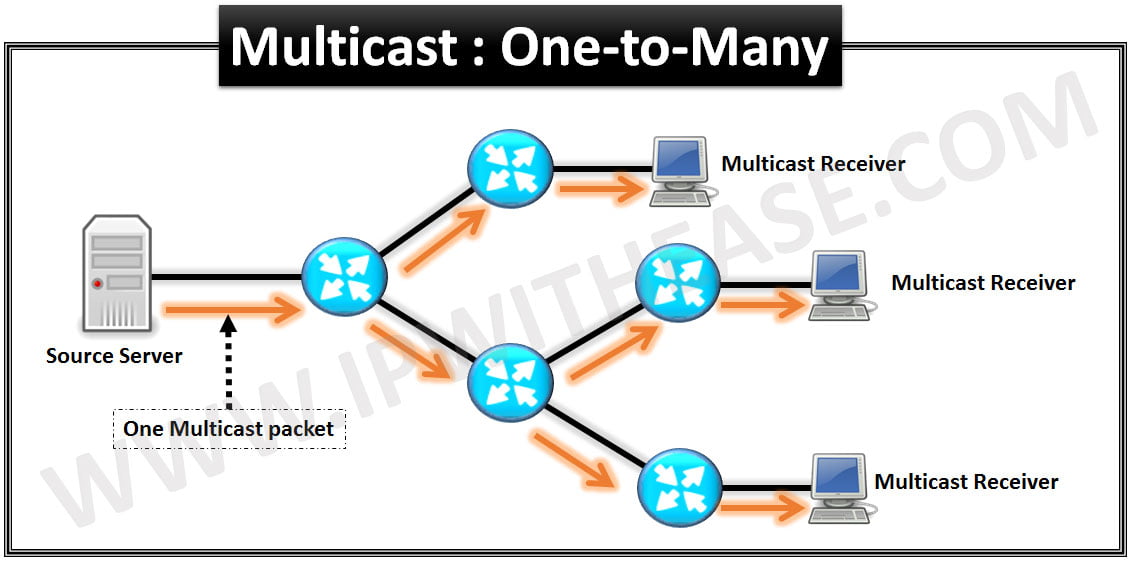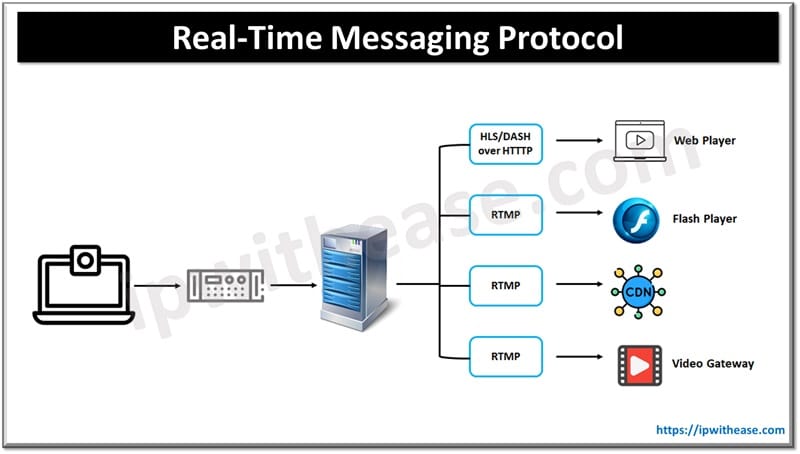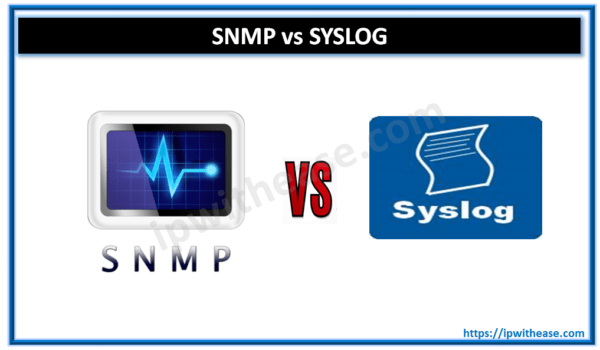Multicast
The multicast term stands for one to many communication.
While in case of a Host running unicast, it will send multiple packets to communicate information with multiple sources, a multicast-capable source will just send one packet stream to send information to multiple servers hence the term “one to many communication” stands true for multicast.
Benefits of Multicast technology –
Multicast Types –
There are 2 types of multicast –
1)ASM or Any Source Multicast –
The receiver doesn’t know about the source and only joins the multicast group.
2) SSM: Source Specific Multicast –
The receiver will join the group and will also know the relevant sources of streaming data for that group.
Related- Multicast Address
Protocols Used When Configuring the Multicast Networks:
1) PIM (PROTOCOL INDEPENDENT MULTICAST):
Used for Router to Router signalling. Currently, used version of PIM is version 2.
Modes of Operation:
- PIM Dense Mode
- PIM Sparse Mode
PIM Dense Mode:
Doesn’t use RP. When functioning in dense mode, the router assumes that all other routers want to receive multicast data for a specific group.
If a router receives these packets and does not need them because there are no clients that it is aware of, it sends a prune message (a message to remove a path) back to the originating router.
In this dense mode, the initial assumption of the protocol is that all routers want to get the messages or data, so more initial data is sent out over the network. This condition eventually creates a source-based multicast distribution tree.
When running in dense mode, the prune messages time out every three minutes, at which time group messages are flooded out of all interfaces again until new prune messages.
PIM Sparse Mode:
Uses RP. Sparse mode, by contrast, involves the router assuming that no other routers want to get multicast traffic. In this case, the router closest to the receiver/host receives a multicast PIM join message from the receiver device requesting multicast for a specific group.
Directly connected routers send the PIM to join message to upstream routers between themselves and the Rendezvous Point (RP), which is a router that is a designated meeting point.
The RP’s job is to keep track of all multicast groups in use on the network. The RP then sends join messages upstream toward the source host.PIM
2) IGMP (INTERNET GROUP MANAGEMENT PROTOCOL):
Used for Host to Router signalling. IGMP also has mainly two versions:
IGMP version 1:
In IGMP version 1 local router sends a Membership query on address 224.0.0.1(All hosts)
Receiver/Host send a membership report to a group for which they want to receive the multicast.
Hosts can leave the multicast group without informing the local router.
Local router waits for 180s and if now membership reports from any hosts are received within 3 minutes interval the local router will stop sending the multicast for that group.
Membership query interval is 60s.
IGMP version 2:
This is the version currently used.
In IGMP version 2 there is a new message added which gave the privilege to hosts to inform local router when they want to leave a multicast group.
This new message is called the leave group message. So when a host leaves a multicast group its sends out a leave group message at 224.0.0.2(All routers).
Then the router will send a group-specific query then to check if any hosts still want multicast for that group. If no IGMP report is received within 3 seconds then that particular group will timeout.
Additionally, there is a selection of IGMP queries if there are more than one router on a LAN segment and also a selection of DR.
The router with the highest IP address on a segment becomes the PIM DR, this router is responsible for registering with the Rendezvous Point for the directly connected sources, joining the distribution tree and forwarding traffic to networks with receivers.
Realted – IGMPv1 vs IGMPv2 vs IGMPv3
The router with the lowest IP address on a segment becomes the IGMPv2 querier, this router is responsible for sending IGMP Group Membership queries and maintaining state for each active Multicast Group.
How often a PIM router sends Hello messages (used by the DR election process) is controlled by the “ip pim query-interval” command, this could be where the confusion occurred.
ABOUT THE AUTHOR

You can learn more about her on her linkedin profile – Rashmi Bhardwaj




